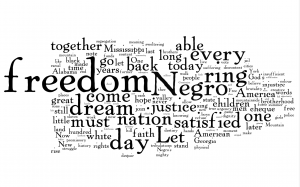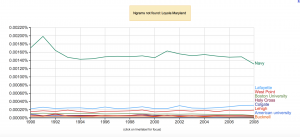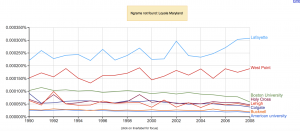WHAT IS DISTANT READING?
Distant reading is a term that was created by Franco Moretti, which means: “understanding literature not by studying particular texts, but by aggregating and analyzing massive amounts of data.” This means that in order to learn more about literature, one must read less books. Moretti argues that close reading (as opposed to distant) cannot uncover the scope and nature of literature. Distant reading and text analyzing tools have been referred to as “magnifying glasses” by William Gass. He acknowledges that taking a step back and reading from a distance can help to see things that he otherwise would not have seen. Carolynn Van Dyke also refers to using computers in text analysis as a magnifying glass of sorts by saying how having a computer version of a text can help to illuminate trends that are otherwise hidden in the text.
Distant reading is meant to support claims made about certain works or to help us understand trends that texts have in common. Hoover states, “Computer-assisted textual analysis is neither a panacea nor substitute for sound literary judgment, but its ability to refine, support and augment that judgement makes it an important analytic method for literary studies in the digital age.” This means that the distant reading is not responsible for creating new ideas about texts, but it can be very helpful in making claims about texts credible by providing evidence.
We can learn a lot about a text that would otherwise be lost by distant reading. Syntax, word frequency, and other measuring factors can easily go unnoticed by a reader. Distant reading allows one to analyzing a text without the preconceived notions that they may have about a text. We can learn a lot by reading from a distance because it defamiliarizes the text and allows us to analyze the text from a different perspective.
Examples of texts being defamiliarized can be seen below using Google N Gram, Wordle, and Bookworm:
WORD FREQUENCY
Word frequency can be one of the biggest indicators of a texts meaning. Word frequency can help us to learn a lot about a text. In his book Computation into Criticism, John Burrows writes, “From no other evidence than statistical analysis of the relative frequencies of the very common words, it is possible to differentiate sharply and appropriately among the idiolects of Jane Austen’s characters and even to trace the ways in which an idiolect can develop in the course of a novel.” The importance of word frequency in one of the most famous speeches in America, Martin Luther King Jr.’s I Have a Dream is not surprising.

As you can see, “freedom” is the most used word. Just by looking at this visual representation of his speech, one would be able to tell that King was advocating for freedom for black people. His commonly used words are obvious in this representation, but it is not as easy to pick up on frequencies while performing a close reading.
NGRAM OF PATRIOT LEAGUE SCHOOLS

The screen grab above is of an N Gram of all of the schools in the Patriot League. Not surprisingly, Navy was atop the list of all the schools by a good amount. Unfortunately, Bucknell was second from the bottom. The Google N Gram shows the frequency of the words you type in in the corpus that they have, which is Google Books.

This graph is the same N Gram, but without Navy. We are able to see the trends of all of the other schools in the league that are not written about as frequently as Navy. We see that Lafayette had a spike in 2002. Another feature of N Gram is being able to look at the works that include the word inputted. I learned that many of the works that mention LaFayette are about Marquis de LaFayette and not about the school. This makes much more sense. So, unfortunately, the computer is not able to detect such discrepancies, but we can still use this as a tool to see how rich the history is of one school over another.
One reply on “”
Matt,
Nice job breaking down the process of distant reading! However, I believe it was Tanya Clement who used the analogy with the “magnifying glass.”
I really liked your N-gram of the patriot league. Unfortunately, Bucknell is at the bottom, but with distant reading we can now ask “Why is this?” and find a source to the problem. Additionally, you might want to check out this link ( http://books.google.com/ngrams/info ) to the Google N-gram’s tips and tricks. I think you could narrow Lafayette down to just the university.
Good Work!